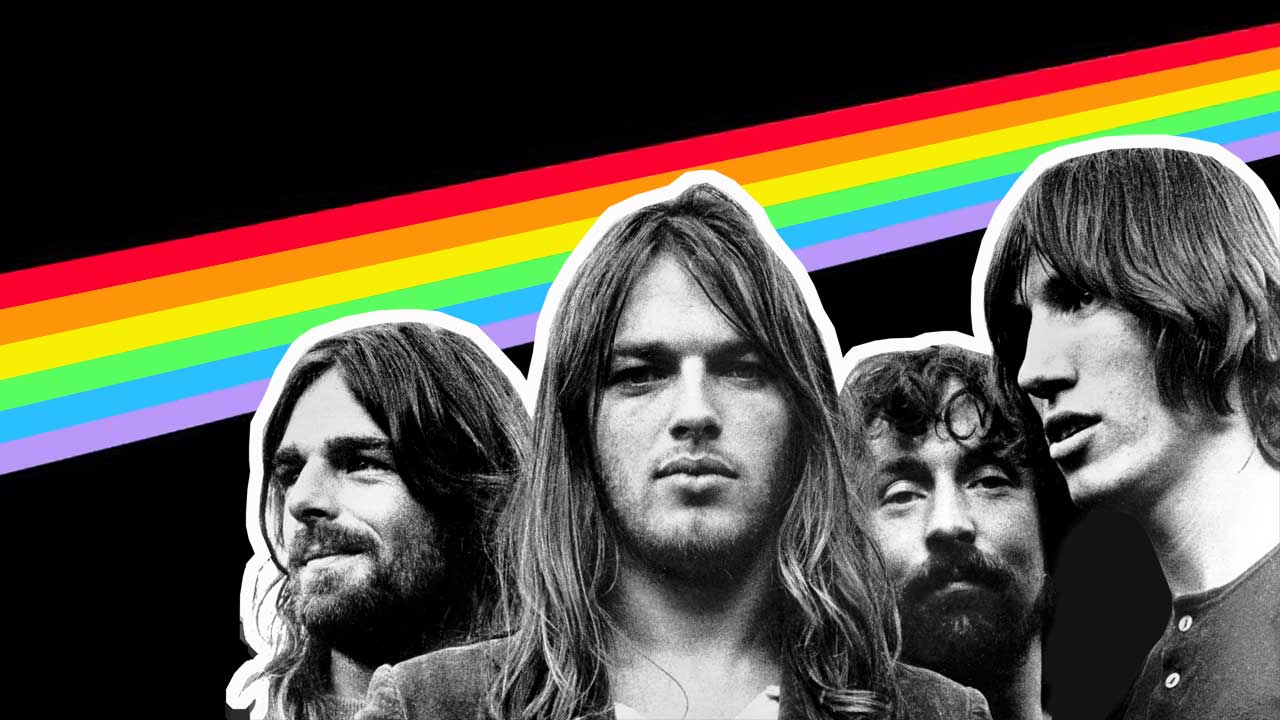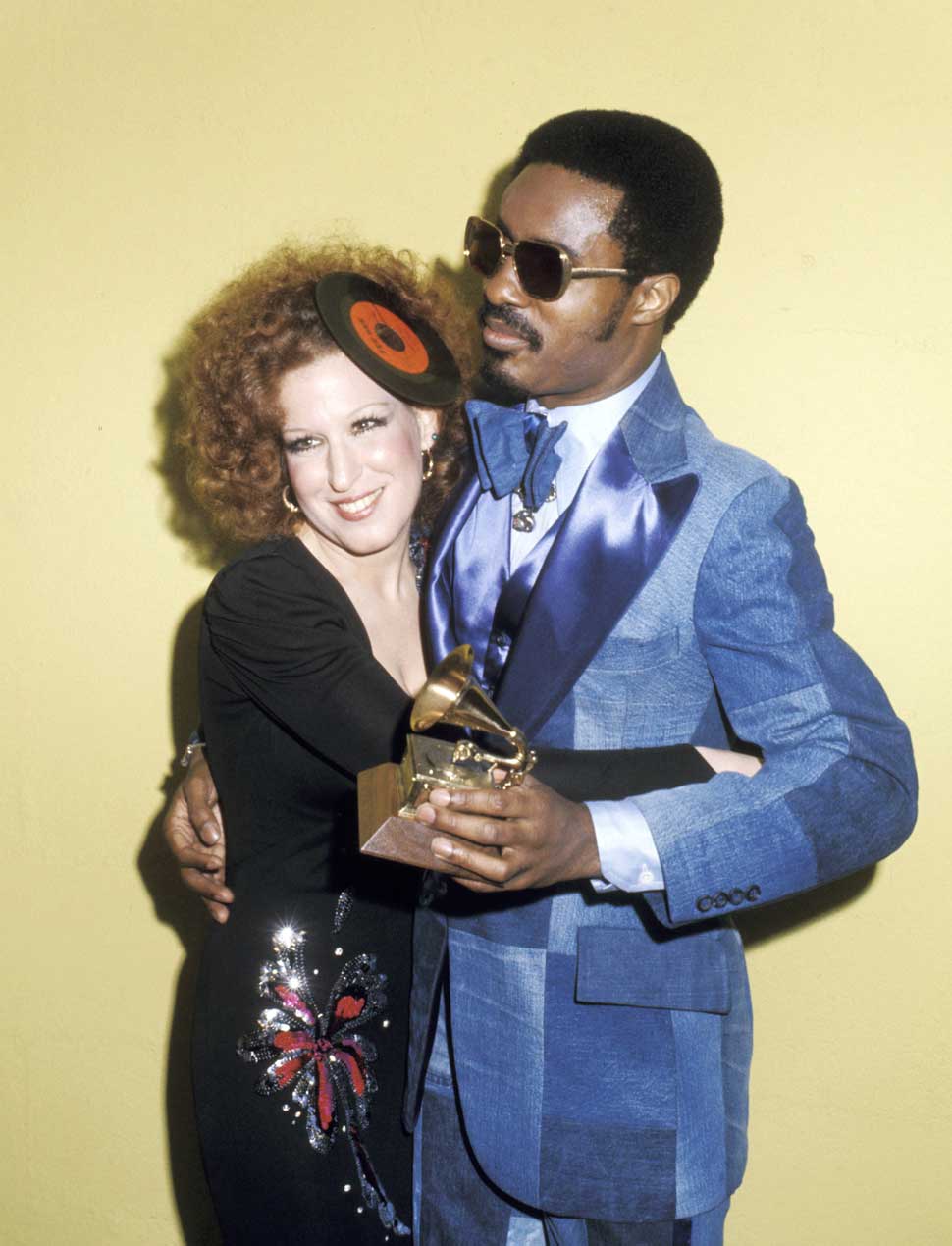Pink Floyd's The Dark Side Of The Moon: 20 things you didn't know
We racked our brains, canvassed experts and drained the internet to bring you 20 things you didn’t know about Pink Floyd's The Dark Side Of The Moon, the fourth-best-selling album of all time

Pink Floyd's The Dark Side Of The Moon was released on March 1, 1973, and has since gone on to become many things.
It's the fourth-biggest selling album of all time. The biggest-selling album by a British band. The first album to complete a 1000-week run on the Billboard Chart (it hasn't actually done that yet, but it will, in September this year). For many it's their go-to album for testing HiFi components (renowned YouTuber Rick Beato recently designated it the seventh best-sounding album ever made). And, in 1990, Australian radio listeners voted it the "best album to have sex to".
Here are 20 things you didn't know about The Dark Side Of The Moon.

1. They played it live almost 100 times before its release
You know how people these days groan when bands play new material? Well Pink Floyd performed The Dark Side Of The Moon in its entirety no less than 87 times prior to its US release on March 10, 1973, and 171 times in total. The lineup that recorded it performed it for the first time in its entirety at Portsmouth on January 21, 1972, and for the last time at Knebworth on July 5, 1975. Pink Floyd (without Roger Waters) revived the piece for their 1994 tour to promote The Division Bell, on which it was played 20 times. Waters performed it 119 times on his solo tours between 2006 and 2008.
2. It was full of recycled ideas
Floyd were never shy about recycling worthwhile unused material. Us And Them evolved from a track known as The Violent Sequence, recorded in 1969 for the soundtrack to the Michaelangelo Antonioni film Zabriskie Point; Breathe originated from a Roger Waters/Ron Geesin collaboration for the music to the 1970 film The Body; the music for Brain Damage was an out-take from Floyd’s 1971 album Meddle.
3. It never reached number 1 in The UK
By the end of 1973, sales of The Dark Side Of The Moon had exceeded 700,000 copies in the UK alone. In the US it's closing in on 1000 weeks on the chart. It is now thought to be the fourth-best-selling album of all time, after Michael Jackson’s Thriller, AC/DC’s Back In Black and the soundtrack to The Bodyguard. Despite such huge sales it never made the UK No.1 spot, stalling at No.2 and held at bay by Alice Cooper’s chart-topping Billion Dollar Babies. In the US, it took just two months to reach the top position.
4. The Great Gig In The Sky vocalist Clare Torry was paid just £30
Clare Torry – chosen after she was heard by engineer Alan Parsons on a Pick Of The Pops covers album – got a standard £30 session fee (double time as it was recorded on a Sunday) for her contribution. She later won a half-share in the copyright and an undisclosed settlement in royalties, in a High Court case she brought against the band and EMI Records in April 2005. Future pressings of the album saw the writing credit for the track change from Richard Wright to ‘Wright/vocal composition Torry’.
Sign up below to get the latest from Classic Rock, plus exclusive special offers, direct to your inbox!
5. Alan Parsons didn't get much out of TDSOTM either
The album’s producer in all but credit (“Alan Parsons, without doubt, would have done more than simply engineer the record,” said Floyd drummer Nick Mason. “Alan was definitely an engineer/producer”), Parsons was credited on the sleeve simply as engineer, and never made any more money out of the album’s monumental success. “I’m sometimes bitter that I earned little or no money from the album,” he told Mark Blake in his book Pink Floyd: Pigs Might Fly, “but that’s offset by the fact that it did wonders for my career.”
6. The Great Gig In The Sky was about death. Or space travel. Or was it just some wailing?
Prior to the recording of Clare Torry’s triumphant vocal, The Great Gig In The Sky was known by the more serious title The Mortality Sequence, and featured an electric piano solo backed by pre-recorded tapes of readings from the Book Of Ephesians, the Lord’s Prayer and discourses by the controversial broadcaster Malcolm Muggeridge.
Studio out-takes released years later revealed that the track was altered further still (at Alan Parsons’s suggestion) with a taped recording of Commander Eugene Cernan’s speech prior to his departing the surface of the moon on Apollo 17 (the final manned Apollo mission), on December 14, 1972, dubbed over the piano solo: “As we leave the moon and Taurus Littrow, we leave as we came and, God willing, as we shall return, with peace and hope for all mankind… Godspeed the crew of Apollo 17.”
When Clare Torry turned up for the session, the band gave her little musical direction, suggesting that they weren’t sure what it was about either.
7. Lloyd Grossman reviewed it for Rolling Stone
Yeah, that Lloyd Grossman, future TV personality and sauce maker. In an early journalistic assignment, he wrote: “There are a few weak spots. David Gilmour’s vocals are sometimes weak and lackluster and The Great Gig in the Sky (which closes the first side) probably could have been shortened or dispensed with.”
But, those quibbles aside, “[it] is a fine album with a textural and conceptual richness that not only invites, but demands involvement. There is a certain grandeur here that exceeds mere musical melodramatics and is rarely attempted in rock.” Apparently it goes well with fish too.
8. It paved the way for the Sex Pistols
The Pistols shocked prog rock fans by wearing ‘I hate Pink Floyd’ T-shirts. But one man was responsible for the sound on both Dark Side and Never Mind The Bollocks. TDSOTM’s sound mixer Chris Thomas – brought in as ‘umpire’ between the conflicting views of Roger Waters and David Gilmour and responsible for the final mix – went on to produce a trio of albums for Badfinger, including, ironically, their 1974 album Wish You Were Here. Despite a CV that included mixing and producing an array of rock artists from The Beatles to Procol Harum and Roxy Music, Thomas also produced the Sex Pistols’ debut album.
9. It was recorded on top of old Beatles tapes
On later CD pressings, many people believe a barely audible orchestral overdub of The Beatles’ Ticket To Ride can be heard after Eclipse. This could be attributed to the reuse of wiped recording tapes, a common studio practice. The bootleg album A Tree Full Of Secrets includes an amplified, enhanced version of this oddity.
10. It led to the release of their first single in five years
Floyd hadn’t released a single since 1968’s Point Me At The Sky. Capitol Records in the US were so convinced of the commerciality of the material on Dark Side that they insisted on singles. When the record company realised that Money contained the word ‘bullshit’, however, they attempted to spare tender American ears by pressing a specially edited radio-promo single of the track. Money reached No.13 in the US Billboard chart.
11. Engineer Alan Parsons was one of the evil geniuses behind the pop band Pilot
Engineer Alan Parsons has rightly been celebrated for all sorts of pioneering studio trickery. (Famously, he recorded the chiming clocks used on Time at an antiques shop near Abbey Road studios where the album was recorded. Taped in advance of the album, it was just a happy coincidence that Floyd had a song called Time.) He went on to find his own personal fame with the Alan Parsons Project, and also engineered The Beatles’ Abbey Road, The Hollies’ He Ain’t Heavy, He’s My Brother and Steven Wilson’s 2013 album The Raven That Refused to Sing (And Other Stories)
But his glorious career hides a dark secret: Parsons also produced three albums by Edinburgh pop group Pilot, including their 1975 hit January, in cahoots with his co-conspirator arranger Andrew Powell. Powell went on to produce the first two Kate Bush albums (Kate, of course, was discovered by David Gilmour) .
12. And if you thought that was a bit incestuous…
Saxophonist Dick Parry was a member of mid-60s Cambridge band Soul Committee that included future Floyd roadie Alan Styles, who is pictured on the back of the Ummagumma album sleeve. Parry’s other band, Jokers Wild, included David Gilmour (and Rick Wills, later of Roxy Music, Foreigner and Bad Company).
Parry went on to tour with Pink Floyd between 1973 and 1977 and on their 1994 Division Bell tour, and also played with them on their Live 8 appearance. Gilmour admitted that they brought in Parry originally because “we didn’t know anyone. We were so insular… We really didn’t know how to get hold of a sax player. And it can be tedious bringing in these brisk, professional session men. A bit intimidating.”
13. It lost out on a Grammy to Stevie Wonder
At the 16th Grammy Awards, held at the Hollywood Palladium in Los Angeles on March 2, 1974, The Dark Side Of The Moon was nominated for Best Engineered Album but lost out to Innervisions by Stevie Wonder. Ironically, four days after the release of Innervisions, Wonder was involved in a car crash that put him in a coma for four days with brain damage. (At the Grammys, Wonder danced with Bette Midler. Rumours that she had the 7” of Money stapled to her head – see below – are unconfirmed.)

14. ‘The Dark Side Of The Rainbow’ was just the beginning
Everyone’s heard of ‘The Dark Side Of The Rainbow’: the conspiracy theory that if you play TDSOTM at the same time as watching The Wizard Of Oz (starting the music after the MGM lion’s third roar), they match up. Any such intention has been denied by everyone involved – Gilmour has pointed out that it would have been nigh-on impossible for the band to have had a copy of the film to work to.
Maybe it’s just an example of ‘apophenia’, the mind’s tendency to strive to see connections or patterns in random data. A similar theory has been applied to Floyd’s The Wall album, with several web-based loonies claiming that playing The Wall at the same time as Pixar’s WALL-E gives you similar audio/visual coincidences. Another Brick In The WALL-E is available all over YouTube. Try it at home, starting the album when the Disney logo appears under the castle. It is funny for the first five minutes.
15. The science of it is wrong
On the original album cover the light band emanating from the prism is split into six colours, missing indigo from the traditional division of white light into a spectrum of red, orange, yellow, green, blue, indigo and violet. Equally, the back of the sleeve depicts an incorrect refraction of light: the emerging spectrum should be divergent, not convergent.
Plus, as Gerry O’Driscoll comments on the album, there is no dark side of the Moon. “Matter of fact,” O’Driscoll says, “it’s all dark,” presumably meaning that the moon doesn’t generate light, but reflects sunlight. While the same side of the moon always faces the earth, the satellite does constantly rotate on its own axis, exposing all of its mass to the sun, meaning that no area of the moon is in permanent darkness.
16. The Medicine Head/ John Peel connection
Famously, Floyd used the title The Dark Side Of The Moon in early performances, but felt duty-bound to change the name to Eclipse when folkblues two-piece Medicine Head released an album with the title Dark Side Of The Moon (note: no ‘The’) in 1972. After Medicine Head’s record failed to sell in significant numbers, however, Floyd reverted back to The Dark Side Of The Moon (Gilmour: “It didn’t sell well, so we thought: ‘What the hell…’”).
According to Medicine Head’s John Fiddler, his album was named after a song he’d written at the time that he had earmarked as a single (in fact it was not released until the Head’s 2005’s odds-and-sods collection Don’t Stop The Dance).
If Floyd did get the name from Medicine Head, it could be the second time they were inspired by DJ John Peel: Medicine Head were signed to Peel’s Dandelion record label, and Floyd and Peel were friends, Peel having first played the band on his radio show in 1967. It was his repeated playing of the crowd in the Kop at his beloved Anfield singing You’ll Never Walk Alone that prompted Floyd to add it to the track Fearless on their 1971 album Meddle.
17. Naomi Watts’s dad is on it
The stoned laughter in the background on Speak To Me and Brain Damage is that of Peter Watts, road manager for the Floyd (who is also pictured on the back of the Ummagumma album sleeve). His daughter, Naomi Watts, is a Hollywood actress who has been nominated for two best actress Oscars, for 21 Grams in 2004 and The Impossible in 2013. Peter Watts died of a drug overdose in 1976. Interviewed in 2003, Naomi commented: “I always grew up thinking that I would die the year – the age – that my father died. He was 31.” She is now 54. According to movie website IMDB, her mobile phone’s ringtone is Pink Floyd’s Money.
18. It was written for a tour, not an album
The music and lyrics for the entire album were written during a seven-week period in 1971 when Pink Floyd were preparing for a tour that was due to commence in January 1972, on which they desperately wanted to premier new material. The lyrics to Eclipse, however, weren’t written until eight dates into the tour.
19. It’s been covered, in full, several times
Several bands have released complete cover versions of The Dark Side Of The Moon – and one of them released two versions. The Easy Star All Stars’ 2003 reggae version was renamed The Dub Side Of The Moon, and in 2010 they released a remixed version of that album titled Dubber Side Of The Moon (The All Stars have also covered Radiohead’s OK Computer in full as Radiodread). Dream Theater released a live version as part of their Official Bootleg series in 2006. The Flaming Lips covered the album in 2009 – featuring guest appearances from Peaches and Henry Rollins – while bluegrass rockers Poor Man's Whiskey released Dark Side of the Moonshine the same year.
This year, former Floyd Man Roger Waters revealed that he's rerecorded the album, telling The Telegraph, "I wrote The Dark Side of the Moon. Let’s get rid of all this ‘we’ crap! Of course we were a band, there were four of us, we all contributed – but it’s my project and I wrote it. So... blah!" No release date for Waters' new version has been set.
20. Its success funded Monty Python And The Holy Grail
The recording of TDSOTM was protracted not only by touring, but also performances with the Roland Petit Ballet in France and the recording of the album Obscured By Clouds – the soundtrack to art film La Vallée. It was also interrupted by less high-faluting distractions: so they could watch football and Monty Python’s Flying Circus. Floyd were such big Python fans that they invested profits from Dark Side in their 1975 film Monty Python And The Holy Grail (fellow investors included Led Zeppelin and Jethro Tull's Ian Anderson).
Glenn Povey was the founder Pink Floyd's Brain Damage fanzine the author of numerous books including Echoes: The Complete History of Pink Floyd,
Pink Floyd: In the Flesh: The Complete Performance History, Pink Floyd in North America 1966-1983, Pink Floyd in Objects and The Treasures of Pink Floyd.
- Fraser LewryOnline Editor, Classic Rock

